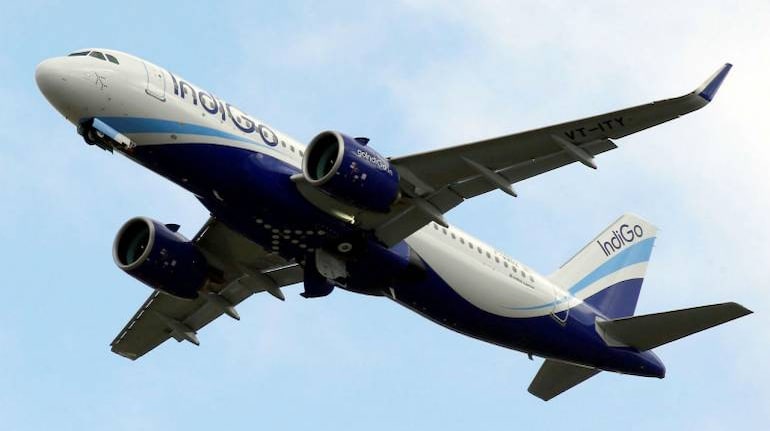



IndiGo started the year by announcing the launch of flights to seven stations. This was a one-of-a-kind announcement, but except Kurnool — where it enjoyed a monopoly — and Bareilly — where it is in a duopoly — the other five were taking on SpiceJet, directly or indirectly.
At Darbhanga, it broke the SpiceJet monopoly. It also entered the mix of Air India and SpiceJet at Rajkot and Durgapur. At Bareilly, the airline took a strong position vis-a-vis existing operator Air India, and joined the party at Leh, where the only two major airlines not operating were IndiGo and AirAsia India.
Also Read: IndiGo remains market leader but rivals catch up in post-pandemic India
Since then, the airline has re-launched flights to Jabalpur and launched flights to Gwalior, both stations where SpiceJet had a very big presence. Now, it is launching flights to Kanpur, its 10th new station in 2021, where SpiceJet currently enjoys a monopoly. This monopoly will end on October 31, when IndiGo lands from New Delhi and scales up its presence the next day onwards with flights from Hyderabad, Mumbai and Bengaluru.
Aggressive pursuit
This is not the first season IndiGo has been chasing SpiceJet. For the record, IndiGo chases everyone, not just SpiceJet. flyBig, which started operations from Indore, experienced this first hand when IndiGo announced new flights on the network flyBig was operating. flyBig has since moved its sole aircraft to Guwahati, operating all but one route under the RCS-UDAN scheme.
IndiGo has been methodically chasing SpiceJet out of multiple markets. SpiceJet vacating Agartala, Coimbatore and recently, Rajkot, have been typical trends.
The airline could only hold fort against IndiGo at Jabalpur, which for a short period was the only station IndiGo had closed in its history.
SpiceJet faces IndiGo almost everywhere
As per the approved Summer Schedule for 2021 released by regulator DGCA, SpiceJet has a monopoly or duopoly (with Air India) at Adampur, Dharamshala, Jharsuguda, Kandla, Kishangarh and Pakyong. Most, if not all, are under RCS-UDAN. Since then the airline has launched flights to Bhavnagar, where again, the airline does not face off with IndiGo.
Dharamshala could well be an IndiGo destination going forward, now that the airline has an ATR base in Delhi. The RCS-UDAN route’s exclusivity is restricted for three years and some stations, like Kishangarh, could see interest from IndiGo and other airlines beyond the exclusivity period.
This leaves just a handful of places where SpiceJet isn’t facing off with IndiGo. The battle becomes intense if it is head-on, as was the case at Agartala. Fares dropped so low, with multiple frequencies from IndiGo, that it forced SpiceJet to vacate the market. Not surprisingly, the fares went up after SpiceJet left. The high fares led to AirAsia India exploring the market but it, too, had to vacate the market.
Fighting back
SpiceJet has exited some markets when IndiGo has chased it down. Agartala and Coimbatore are just two of them. Its diversification and capacity building strategy at Rajkot has also not yielded results. While the airline is guarded because of RCS-UDAN routes to Darbhanga, the same does not hold true for Kanpur.
Also Read: American Airlines codesharing with IndiGo—by choice or lack of it?
SpiceJet is not a capacity leader at any of the top 20 airports in the country. In the airports where it leads in capacity, the market sizes are not as big as the larger cities and it is very easy for the competition to sway the market.
The challenge also stems from the size of both airlines. SpiceJet operated an average of 158 flights per day in July, while IndiGo operated 874 flights per day, shows data released by the DGCA. When three flights of SpiceJet are hit hard, that's 2 percent of its total flights. But when three flights of IndiGo are hit hard, it's just 0.34 percent, which shows what scale means. A cash-rich IndiGo can sustain losses for three flights much better than anybody else can.
The network factor for IndiGo
IndiGo, over the years, moved away from being a point-to-point low-cost carrier to become a network carrier, something much-needed in India due to the lack of options. This, coupled with other non-LCC type features, such as corporate bookings and deals, led to IndiGo reaching the scale it has today.
As a new station gets added with new connectivity, the network factor comes into play. Every incremental flight adds connecting traffic across the network and while a new flight might make losses initially, the connecting passengers help improve profitability of some other flight or sector.
Tail Note
Having IndiGo alongside at every station is a reality SpiceJet or any other carrier should factor in as part of their planning. In most if not all the stations that IndiGo started this year, one gets the sense that it landed after another airline had taken pains to develop the traffic.
Discover the latest Business News, Sensex, and Nifty updates. Obtain Personal Finance insights, tax queries, and expert opinions on Moneycontrol or download the Moneycontrol App to stay updated!
Find the best of Al News in one place, specially curated for you every weekend.
Stay on top of the latest tech trends and biggest startup news.